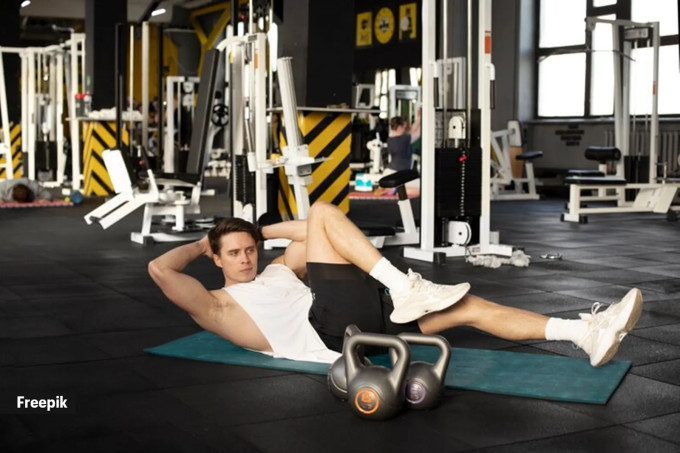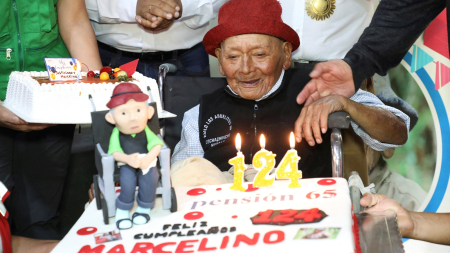What is the ‘old man test’, and is it an effective way to assess your fitness levels?
Even though it sounds like a fun exercise to do, how effective is the old man test in showing the fitness level of a person?
Popularised by CrossFit coach Chris Hinshaw, this test involves standing on one foot with bare feet. Then, without letting the foot that is in the air touch the ground, and maintaining complete control and balance, try picking up your sock from the floor and putting it on. After this, bend again to pick up your shoe, wear it, and tie your laces while keeping your balance intact. Once done, do the same on the other side without falling or kneeling to pass the test.

According to Prateek Sudhir Kumar, founder of Fitcru, “The old man test targets aspects such as cardiovascular endurance, muscular strength, flexibility, and agility.”
Sherene Vijayakumar, CEO, Breakthrough Studio, Bengaluru also elaborates, “The test checks a person’s strength, coordination, flexibility, balance. As you age, you need all these factors to improve so that you can keep functioning effectively in your day-to-day activities without getting external support.” She agrees that it does reflect on the person’s fitness level, however, cardiovascular health, and emotional health are not detected.
Can individuals with certain physical limitations or impairments effectively perform the old man test?
Individuals with physical limitations or impairments, Kumar believes, may still be able to perform modified versions of the old man test tailored to their abilities. While the test may need to be adapted to accommodate specific challenges, it can still provide valuable insight into their fitness and functional capacity.
Vijayakumar concurs, “If a person has a physical limitation, this will not be an accurate way of measuring their fitness level. We need to take into account the limitations and modify the test accordingly.”
 Individuals with physical limitations or impairments, Prateek Sudhir Kumar believes, may still be able to perform modified versions of the old man test tailored to their abilities (Source: Freepik)
Individuals with physical limitations or impairments, Prateek Sudhir Kumar believes, may still be able to perform modified versions of the old man test tailored to their abilities (Source: Freepik)
If someone fails the test, what would you recommend they do to address their areas of weakness?
According to Kumar, if someone fails the test, it’s essential to identify the specific areas of weakness and develop a targeted training, nutrition and recovery plan to address them. This might involve incorporating exercises to improve cardiovascular endurance, strength, flexibility, and agility. Additionally, focusing on overall lifestyle factors such as nutrition, sleep, and stress management can contribute to better fitness outcomes.
After making these changes, Vijayakumar recommends trying to push yourself and put your body to the test in the future so they can ascertain if their strength, flexibility, coordination, which are essential functional parameters have improved.
Do you believe in the efficacy of the old man test in assessing someone’s youthfulness or physical capabilities?
“The old man’s test is a fun, quick way of assessing your fitness level, but I recommend that people do a body composition analysis which gives more details on proportion of fat or muscle ratio, bone mass, body age, visceral fat, among others,” suggests Vijayakumar. Kumar agrees, “While it can offer valuable insights into someone’s fitness level, it may not fully capture all aspects of youthfulness or physical capabilities beyond traditional assessments.” Other factors such as cognitive function, balance, coordination, and overall quality of life, he says, should also be considered when assessing someone’s holistic well-being and vitality.
Alternative or supplementary tests that could provide a more comprehensive evaluation of someone’s fitness and mobility
Vijayakumar suggests a Vo2max test, which measures the maximum amount of oxygen an individual can use during intense exercise, along with a heart rate variability test which evaluates overall health as well as the functioning of the nervous system. She also recommends going for genetic testing which will provide insights into a person’s predisposition to injury, fat, and metabolism, to help create personalised training and nutrition plans. Kumar recommends other tests including Functional Movement Screen (FMS), timed up and go test, sit-to-stand test, and various flexibility assessments.
Disclaimer: The copyright of this article belongs to the original author. Reposting this article is solely for the purpose of information dissemination and does not constitute any investment advice. If there is any infringement, please contact us immediately. We will make corrections or deletions as necessary. Thank you.





